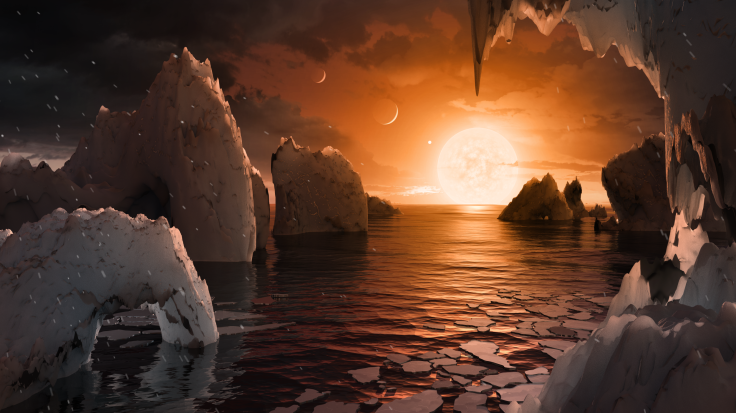An Alien Solar System’s Version Of Earth And Mars Might Be Habitable

The planets in the TRAPPIST-1 solar system that are most likely to support extraterrestrial life are the ones in the same position as Earth and Mars in our own system, according to new research.
With seven Earth-sized exoplanets closely orbiting a small star about 40 light-years away, TRAPPIST-1 has become arguably the most famous alien solar system in the couple years since its discovery. Scientists have previously reported that a handful of the planets could be in their star’s habitable zone and a new study in the journal Astronomy & Astrophysics takes that idea a step further, pointing to two of its planets that are most likely to be comfortable for alien life. Those planets are the third and fourth ones from the star, TRAPPIST-1d and TRAPPIST-1e.
In the order of the planets, the two exoplanets have the same position in their solar system as Earth and Mars, although they are much closer to their star than Earth and Mars are to the sun.
Despite their proximity to the TRAPPIST-1 star, all the planets are relatively cool because the star is small.
To figure out which of the seven exoplanets are most likely to be habitable, a team of researchers analyzed their orbits, temperatures and possibly compositions.

“Assuming the planets are composed of water ice, rock and iron, we determine how much of each might be present, and how thick the different layers would be,” researcher Amy Barr said in a statement from the Planetary Science Institute, where she is a senior scientist. To make up for unknowns like the exact masses and diameters of the planets, “we show the full range of possible interior structures and interior compositions.”
Better hammering out the mass and radius of each planet would make for better predictions, however.
The analysis suggested that TRAPPIST-1d and TRAPPIST-1e are the most likely to be habitable because their surfaces could be temperate and their interiors could be heated by the energy created from the gravitational forces of their orbits.
The third planet, the one in the same position in the planetary order as Earth, may also be covered by an ocean, according to the institute.
In addition to the findings about TRAPPIST-1’s version of Earth and Mars, the team also found that the first and second planets might have mantles of molten rock and surfaces of solid rock onto which magma erupts. The three planets farthest out could possibly have icy surfaces covering oceans.
One remaining concern is the radiation from the star.
“Any form of life is threatened … by strong stellar activity,” according to the study. The TRAPPIST-1 star might have “frequent flares which present a serious threat for planetary atmospheres. Strong magnetic fields are required to protect the atmosphere from erosion, and life from high-energy radiation.”
© Copyright IBTimes 2025. All rights reserved.




















